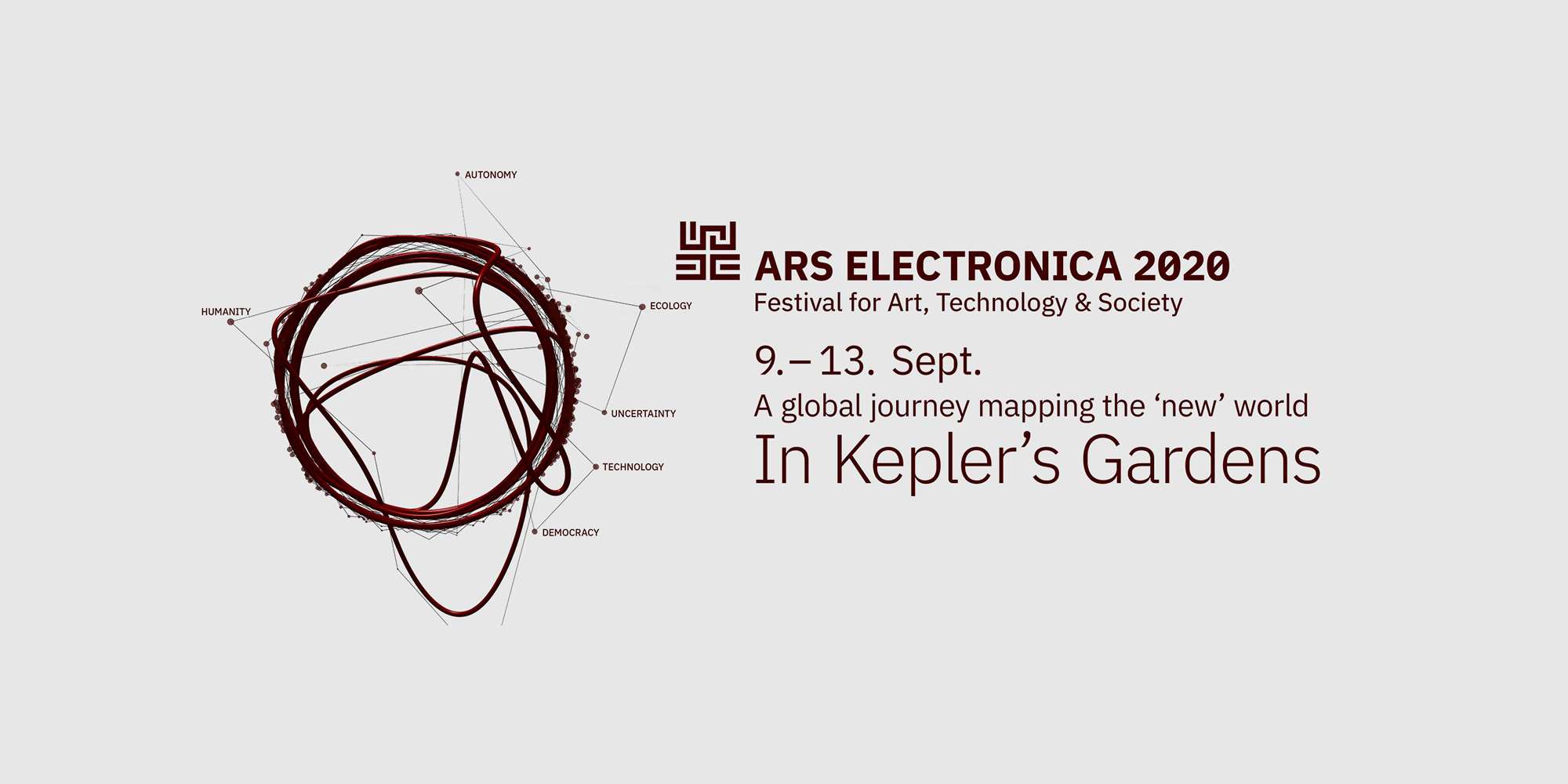Bio Art

Pangardenia Boat Trip
Saint-Petersburg is a city built on swamps and full of water. We don’t have much greenery rooted in soil, but we do have underwater “gardens” (microbiome of Neva, Fontanka, Krukov Kanal, etc.) and deeply layered swamp life in the city’s depth. This path will lead us through water nomadic gardens of the city and its outskirts. It will be a site-specific artistic boat-trip that collaborated with boat-drones whose task is to collect eco-data.

Evgeniy Molodsov: Ramus
Cultural institutions such as universities and museums are locked. Used to be full of activities and people, today they are abandoned gardens. We will visit these semi-closed, semi-live spaces and share this experience online to recreate them in virtual spaces and to find new ways for growing knowledge and art.
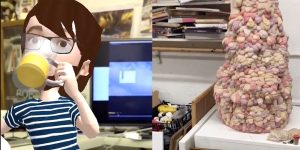
INVISIBLE Studio visits with Andy Holden and Thijs Biersteker
Andy Holden (UK) and Thijs Biersteker (NL)
Join us for a behind-the-scenes studio visit with INVISIBLE artists Andy Holden (UK) (INVISIBLE / DARK MATTER) and Thijs Biersteker (NL) (INVISIBLE - Gravitational lensing)
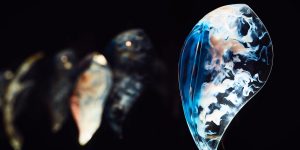
Hybrid Living Materials
The Mediated Matter Group (INT)
Hybrid Living Materials (HLMs) weisen auf eine aufregende Zukunft für DesignerInnen an der Schnittstelle von Biologie und Technologie hin, wenn es darum geht, Produkte zu entwickeln, die auf eine bestimmte Form sowie auf ein bestimmtes Material, eine bestimmte chemische und sogar genetische Zusammensetzung zugeschnitten sind.
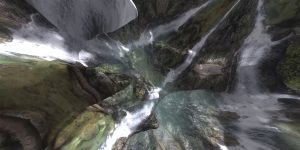
Habitat
Heleen Blanken (NL)
The environmental crisis and the destruction of habitats forces us to imagine a future in which nature can be remembered in digital form. Natural history museums seek to preserve nature physically by fixing it in time and space. How might the archiving of nature evolve in a digital context? Could it bring us even closer to nature? Habitat is a data-driven installation that uses 3D scans of organic artefacts such as stones, corals and fossils from Leiden’s Naturalis Biodiversity Center and transforms them into a game-like, meditative environment. You are invited to reconnect with the wonder of nature as you navigate through a series of ever-evolving digital worlds, each accompanied by its own soundscape. Original installation is on display at Nxt Museum.

Econtinuum
Kathy Steppe (BE), Thijs Biersteker (NL). Moderation: Bogomir Doringer (RS/NL)
We do not acknowledge that collaboration with plants is paramount to our existence. Econtinuum is a new installation by ecological artist Thijs Biersteker, in partnership with different scientists and commissioned by Nxt Museum. It visualises the latest pioneering research into plant-to-plant communication. In discussion with the artist and bio-engineer in environmental technology, we will uncover how trees work together, how to learn from each other, warn each other and share nutrients, but also how we can learn from it to improve our own communication and relationships. We can again connect with nature by using the latest technology.
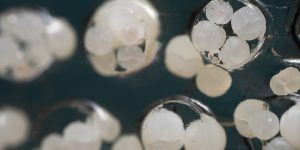
Observing the Microscopic Gardens
Saša Spačal (SI), Toby Kiers (NL/US), Esmee Geerken (NL), De Onkruidenier (NL), Spela Petric (SI), Nicola Triscott (UK)
The nocturnal roundtable “Observing the Microscopic Gardens” features three events: 1. Artist Saša Spačal and microbiologist professor Toby Kiers discuss microbial trade agreements 2. Artist/chemist Esmee Geerken and De Onkruideniers present their microscopic garden houses 3. Artist Spela Petric and curator Nicola Triscott discuss what opinions plants and animals might have about human activity on their/our planet.

Observing the Macroscopic Gardens
Christiaan Zwanikken (NL), Raoul Frese (NL), Angelo Vermeulen (BE), Remco Daalder (NL)
The nocturnal roundtable “Observing the Macroscopic Gardens” features two talks: 1. Artist Christaan Zwanikken will talk about city-dwelling plant robots with astrophysicist Raoul Frese 2. Artist-biologist Angelo Vermeulen will talk about socializing Mars-gardens with Remco Daalder, municipal ecologist of Amsterdam
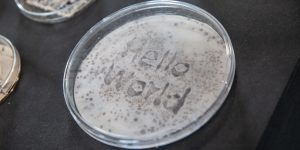
Design by Decay, Decay by Design
Andrea Ling (CA)
Design by Decay, Decay by Design ist eine Reihe von Artefakten, die designten Verfall darstellen. Sie wurden im Rahmen der Ginkgo Bioworks Creative Residency 2019 zum Thema „Wie gestaltet man eine Welt ohne Abfall?“ gefertigt. Als Architektin und Künstlerin erkenne ich, dass die meisten meiner Kreationen auf der Mülldeponie landen. Wenn das der Fall ist, will ich Abfall entwerfen, mit dem ich leben kann, Abfall, der eine gewisse Attraktivität behält, indem er sich vor den Augen und vor Ort zersetzt. Lasst mich Abfall so entwerfen, wie die Natur ihn entwirft, nicht nur als das Produkt von Abbau und Zerstörung, sondern auch als Input für Erneuerung und Konstruktion.

Microorganisms and their Hosts
Mindaugas Gapševičius (DE/LT)
The video Microorganisms and their Hosts proposes to reconsider the ecology of a human while questioning the impact of the microbiome, researching self-healing strategies, and experiencing the artwork in parallel to the changing environmental conditions. How can one experience their microbiome? Is there any dependence between what we eat, how we behave, and what we think?
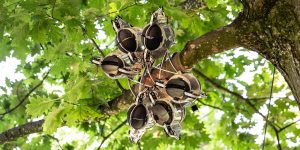
A Diverse Monoculture
Jip van Leeuwenstein (NL)
A Diverse Monoculture ist eine neue Familie artifizieller Arten, die zusammen einen Bienenstock von neuen Raubtieren bilden. Diese Raubtiere werden eingesetzt, um das Gleichgewicht in unserem Ökosystem wiederherzustellen. Das erste Roboter-Raubtier in der Familie ist die Dionea Mechanica Muscipula, eine Kreatur, die dazu bestimmt ist, Eichenprozessionsspinner anzulocken und zu verdauen. Die Dionaea Mechanica Muscipula wurde entwickelt, um die Population der Eichenprozessionsspinner (eine große Plage in den Niederlanden) zu reduzieren.

Art & Science Crossovers: A Journey with BOZAR, Waag and gnration
Waag (NL), BOZAR (BE), gnration (PT) Lucas Evers (NL), Luis Fernandes (PT)
In dieser Tour reisen wir in die Gärten Amsterdam, Brüssel und Braga, wo BOZAR, Waag und gnrtion Einblicke in die nachdenklich stimmende Programmgestaltung an der Schnittstelle von Kunst und Wissenschaft geben, die sie im Rahmen des Festivals präsentieren.
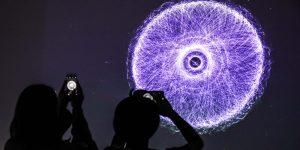
Ars Electronica Export - Tour and Networking
Ars Electronica Export reist nach Nikosia (RISE), Dresden (Hygienemuseum), Esch-sur-Alzette (Kulturhauptstadt2022) und San Sebastian (Tabakalera), um über die Zusammenarbeit und die Projekte zu sprechen, die wir nicht nur während des Ars Electronica Festival 2020 sehen.

Biocomputer Rhythms
Interdisciplinary Centre for Computer Music Research (ICCMR), University of Plymouth (UK), Eduardo Reck Miranda (BR/UK)
Biocomputer Rhythms is a piece for prepared piano and percussion. It is a musical duet between a pianist and an intelligent interactive biocomputer. The biocomputer listens to the piano and produces musical responses during the performance. The responses are played on percussion instruments and on the piano by the pianist. The piano is prepared with electromagnetic actuators positioned inside the instrument to vibrate its strings. Electromagnetic actuators are also used to vibrate percussion instruments.
